Gallery: Search for the Higgs Boson
Protons Collide

Particle tracks from a proton-proton collision (also called an event) in the ATLAS experiment at CERN's Large Hadron Collider (LHC). Events like this are a possible sign of the Higgs particle, though many events must be analyzed together to say with confidence the signal came from the elusive particle.
CMS CERN Particle Tracks
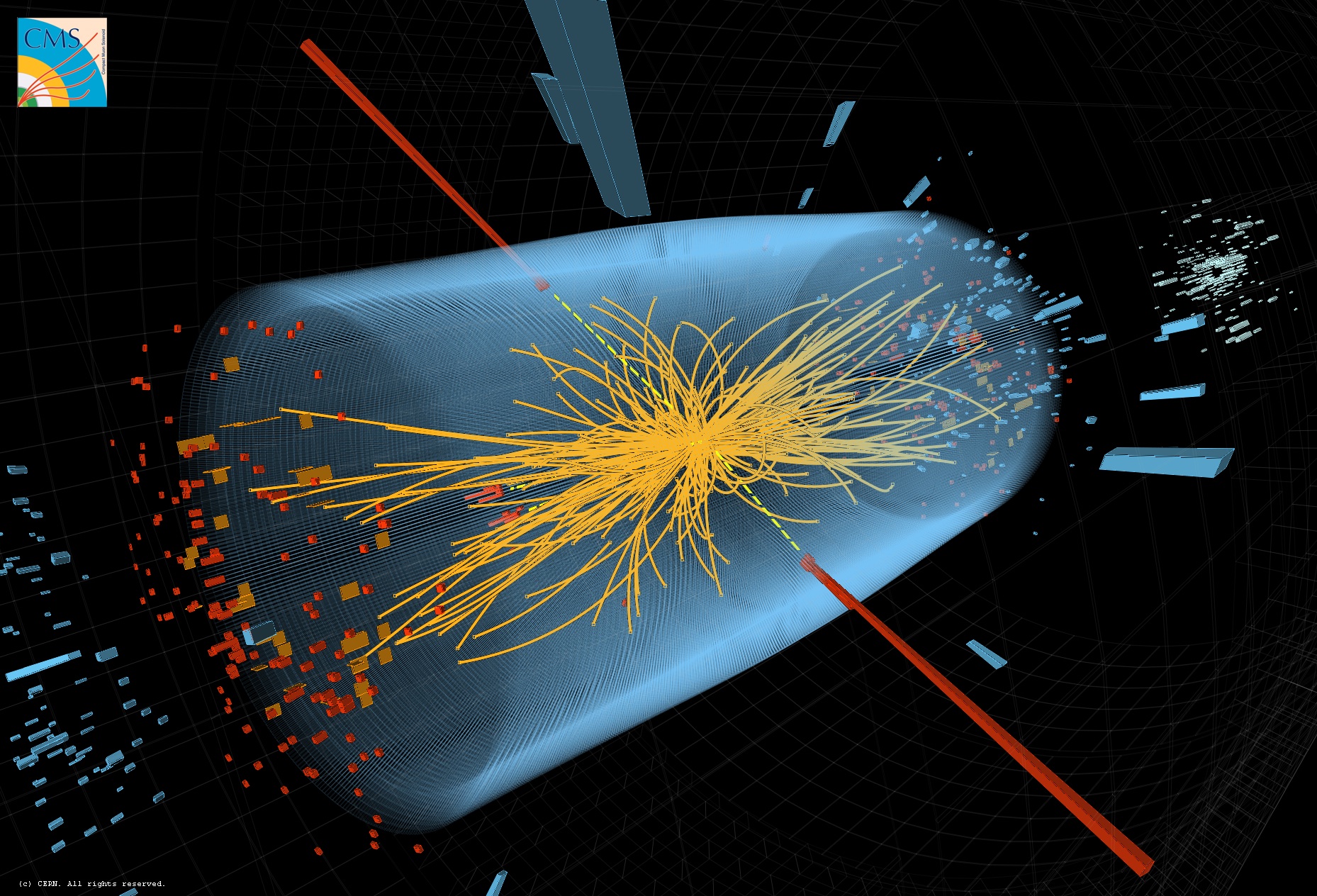
A typical candidate event at the Large Hadron Collider (LHC), including two high-energy photons whose energy (depicted by red towers) is measured in the CMS electromagnetic calorimeter. The yellow lines are the measured tracks of other particles produced in the collision. The pale blue volume shows the CMS crystal calorimeter barrel.
CERN Physicists Watch Higgs Boson Presentation

Physicists at the CERN laboratory in Geneva, Switzerland view a presentation of the data collected so far in the search for the Higgs boson particle at the Large Hadron Collider's ATLAS experiment.
LHC ATLAS Higgs Data So Far
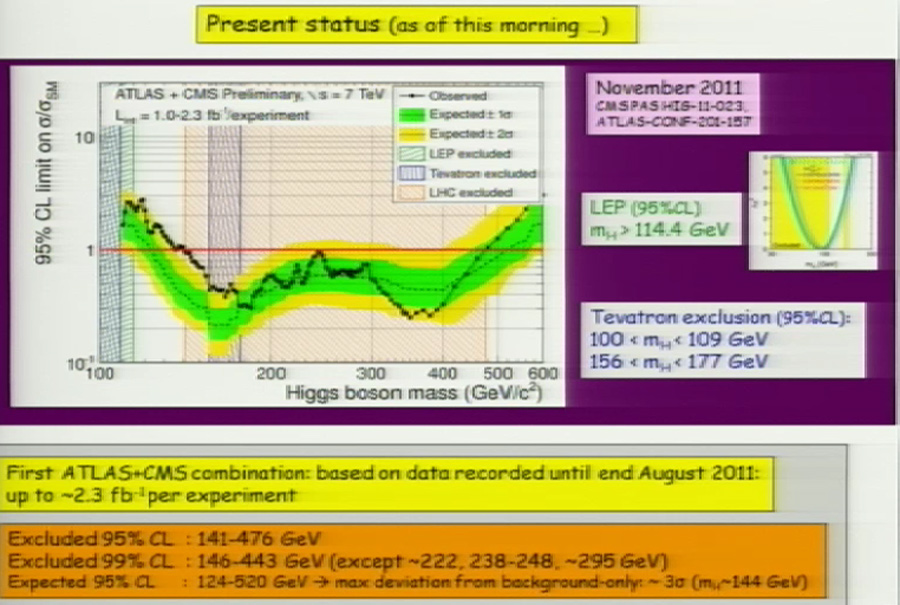
This plot shows the data collected so far by the Large Hadron Collider's ATLAS experiment in the search for the Higgs boson particle.
LHC's ATLAS in LEGOS
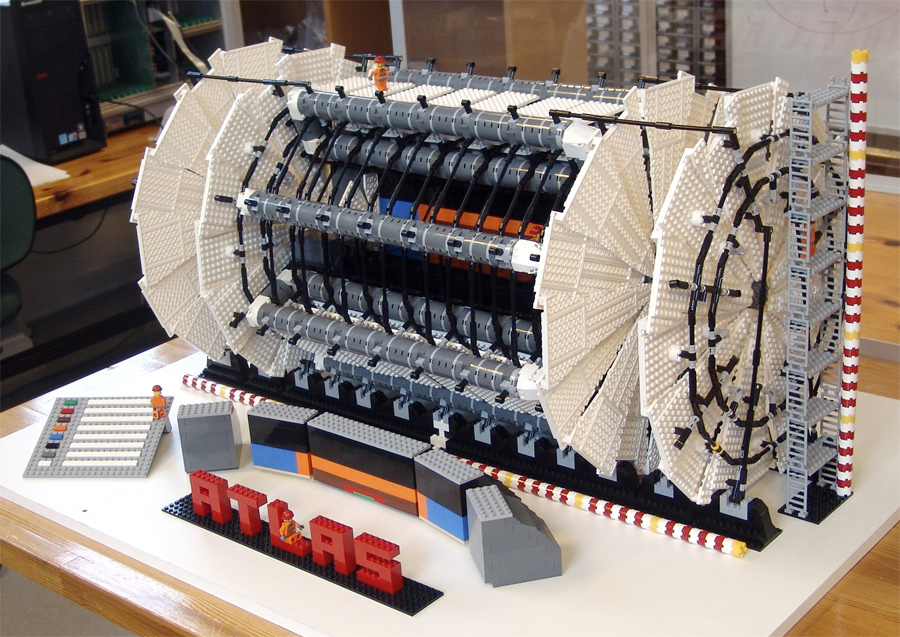
A model of the Large Hadron Collider's ATLAS detector, which is searching for the Higgs boson, made out of LEGO blocks by Sascha Mehlhase.
LHC's CMS Shows Possible Higgs Signature

Real CMS proton-proton collisions events at the Large Hadron Collider in which 4 high energy electrons (red towers) are observed. The event shows characteristics expected from the decay of a Higgs boson but is also consistent with background Standard Model physics processes.
Simulated Higgs Boson Produced
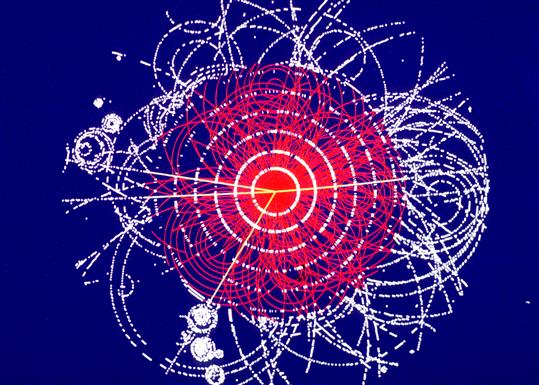
This track is an example of simulated data modelled for the ATLAS detector on the Large Hadron Collider (LHC) at CERN. The Higgs boson is produced in the collision of two protons at 14 TeV and quickly decays into four muons, a type of heavy electron that is not absorbed by the detector. The tracks of the muons are shown in yellow.
Get the world’s most fascinating discoveries delivered straight to your inbox.
Higgs Boson Candidate Event
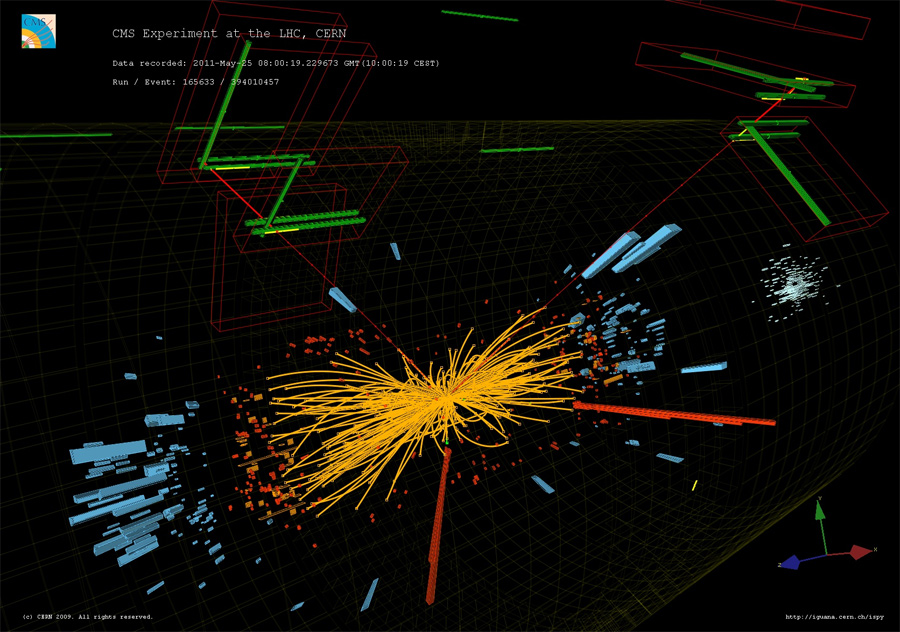
This event was detected at the LHC's CMS experiment, in which one Z boson particle decays to two electrons (red towers), and another Z boson decays to two muons (red lines). Such an event is a candidate event for the Higgs boson particle.
Two Z Bosons Decay at LHC's CMS
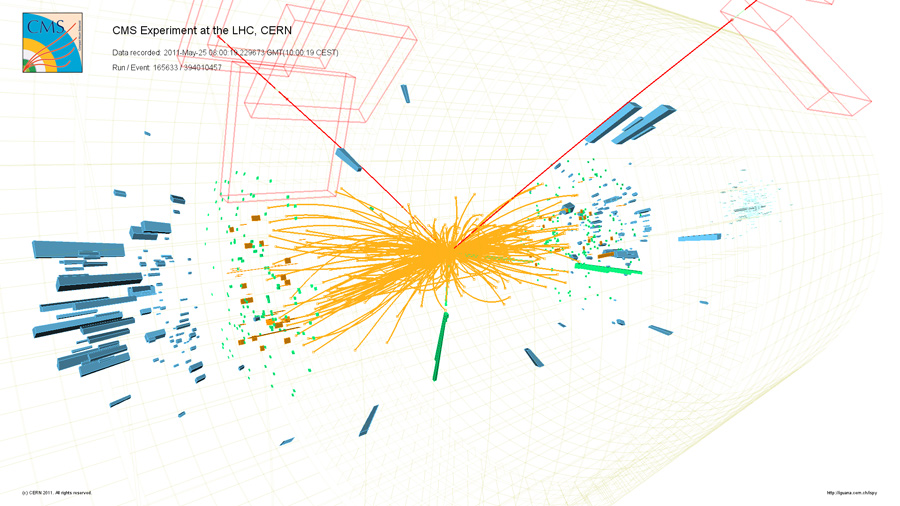
This event observed at the LHC's CMS experiment shows a candidate event involving two Z bosons, in which one Z decays to two electrons (green towers), and the other to two muons (red lines). Such an event might indicate signs of the Higgs boson.
Proton-Proton Collision at CMS
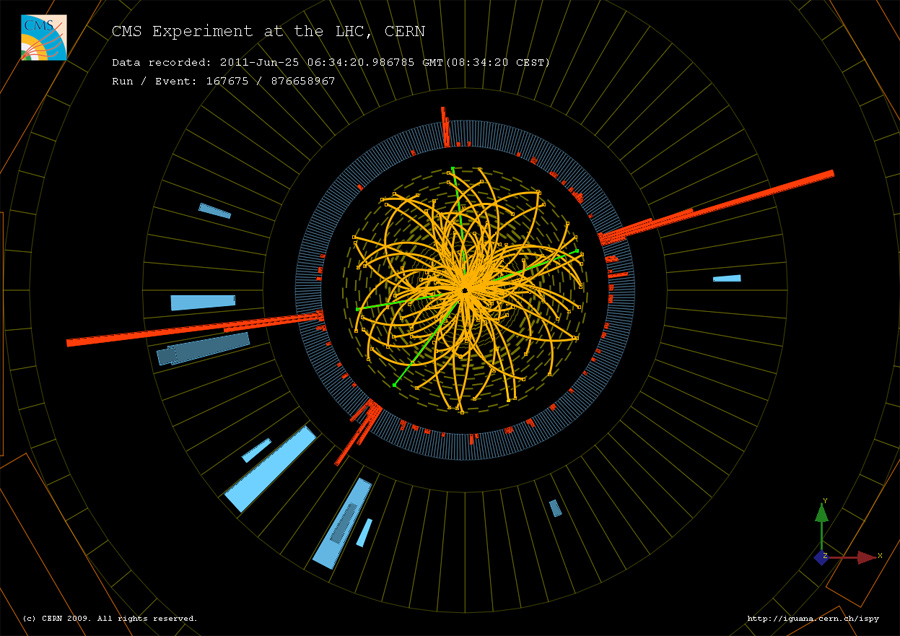
Real CMS proton-proton collisions events in which 4 high energy electrons (red towers) are observed. The event shows characteristics expected from the decay of a Higgs boson but is also consistent with background Standard Model physics processes.
CMS_Higgs-event

An example of simulated data modeled for the CMS particle detector on the Large Hadron Collider. Here, following a collision of two protons, a Higgs boson is produced which decays into two jets of hadrons and two electrons. DeGrand's theories represent an alternative to the standard model.

